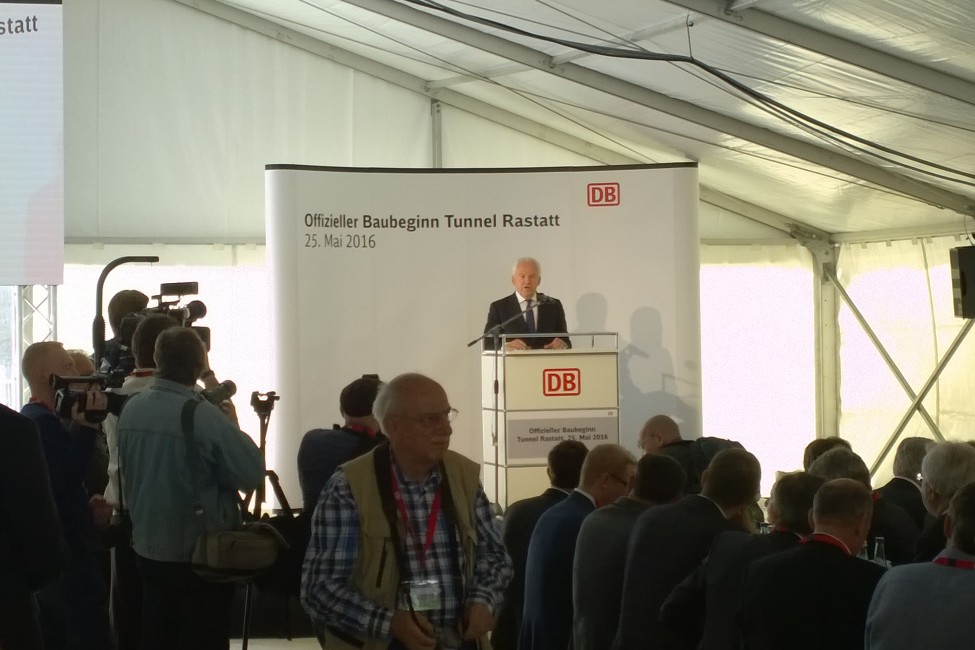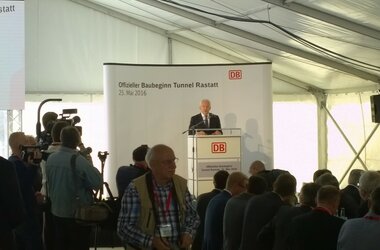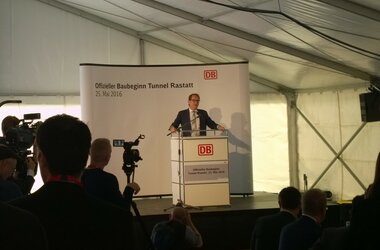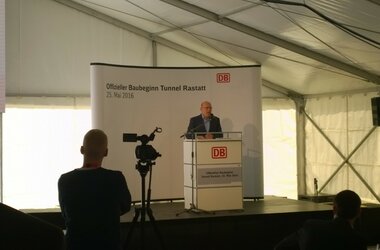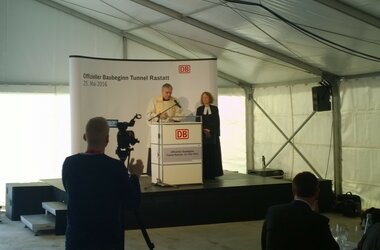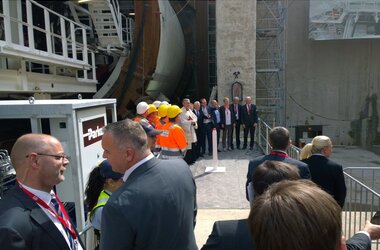Construction of the Rastatt Tunnel officially starts
On 25.05.2016, the mining work for the Rastatt Tunnel officially began in the presence of numerous prominent figures. The tunnelling under the town of Rastatt is to begin with two single-track tunnel sections, each 4,277 m long. The rail trail for the upgraded line and new line between Karlsruhe and Basel descends into the depths at Ötigheim and reappears at the surface to the south of Rastatt approximately 4.3 km further on.
On 25.05.2016, the mining work for the Rastatt Tunnel officially began in the presence of numerous prominent figures. The tunnelling under the town of Rastatt is to begin with two single-track tunnel sections, each 4,277 m long. The rail trail for the upgraded line and new line between Karlsruhe and Basel descends into the depths at Ötigheim and reappears at the surface to the south of Rastatt approximately 4.3 km further on.
The first speaker was Mr Sven Hantel, Management Representative for Deutsche Bahn AG for the Federal state of Baden-Württemberg, and he explained the significance of the 690 million euro project for rail traffic throughout Europe. The Rastatt Tunnel is an important part of the main European line from Rotterdam to Genoa. The 57 km-long Gotthard base tunnel is also on this stretch and was opened on 1 June 2016. The Chairman of the Board of Deutsche Bahn AG, Dr Rüdiger Grube, emphasised the major efforts of the company to complete the project on schedule. Parallel to this, he pointed to the introduction of BIM (building information modelling) with this project and thus the start of digital planning at DB. The Federal Minister for Transport and Digital Infrastructure, Mr Alexander Dobrindt, explained not only the significance of the project for Germany but also the enormous benefits of the tunnel for the region, in particular for the people of Rastatt. He also talked about the introduction of BIM, which is becoming standard practice with major projects. The Minister for Transport and Infrastructure for the Federal state of Baden-Württemberg, Mr Winfried Hermann, praised the project; however, he also pointed to the extremely long period for the implementation of this project and the associated delay of over 18 years.
After the blessing by the church and the christening of the tunnel boring machine with the name Wilhelmine, the symbolic boring of the East tunnel was started to great applause. The tunnel boring machine supplied by Herrenknect, which weighs approximately 2,000 tonnes and is 90 metres long, has been designed to travel 10 and 15 m per day. Due the very small covering of ground in some places, the intention is to artificially freeze the ground area by area.
From 2022, the intention is that trains will travel through the Rastatt Tunnel at a maximum speed of 250 km/h. After the construction of the entire stretch between Karlsruhe and Basel, the travelling time between Karlsruhe and Freiburg will be shortened drastically, namely by approximately 30 minutes.
The technical verification of the northern trough, including the cut-and-cover construction of the tunnel on the north side, will be carried out by Dr.-Ing. Ioannis Retzepis, Managing Director of KREBS+KIEFER Karlsruhe and an auditor for railway construction.
